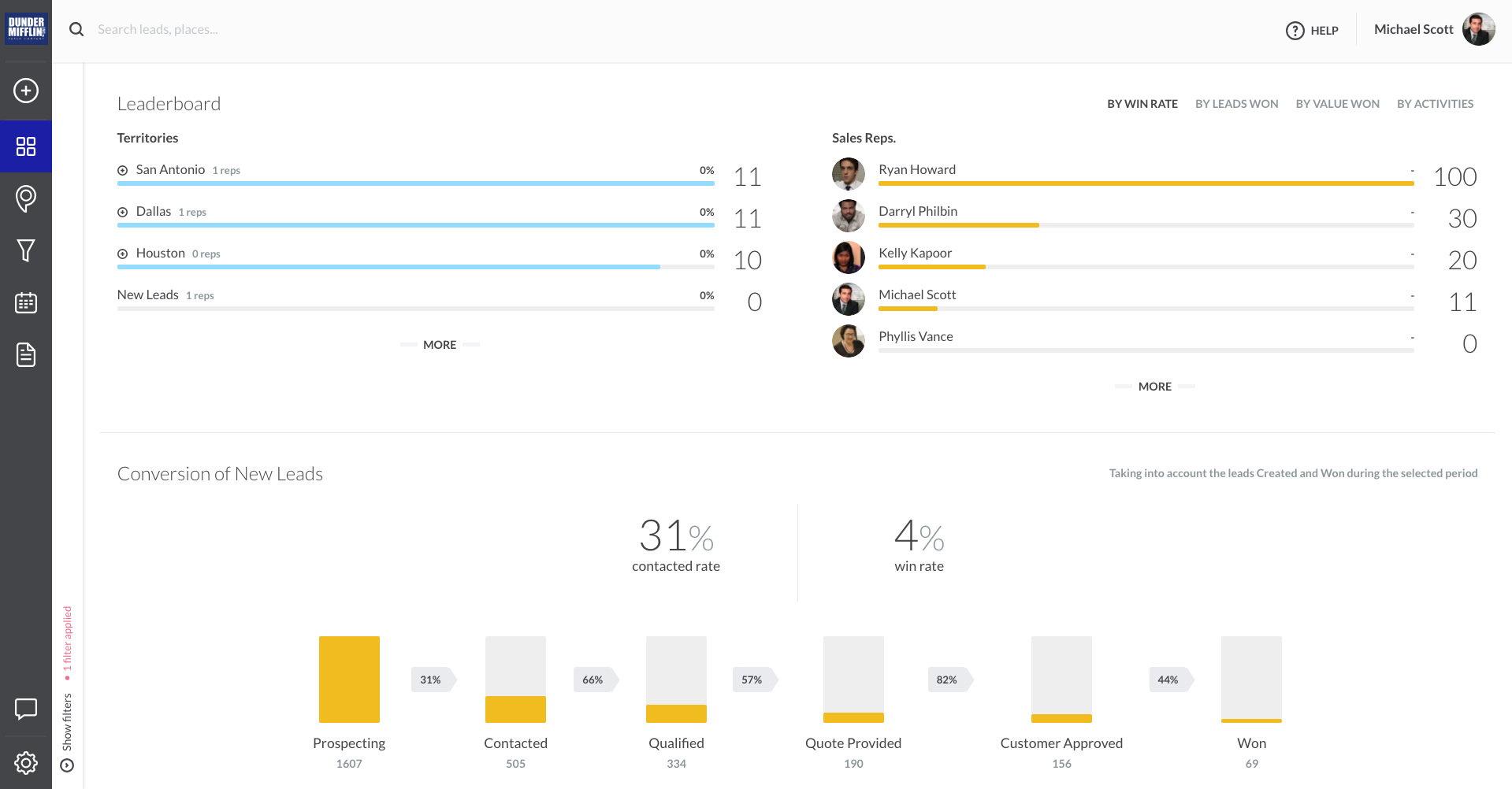The success of your sales team depends on the strength of your reps.
But finding the right reps (and retaining them) is easier said than done. Training Industry Magazine estimates that it takes an eye-watering 381 days to train a new sales rep to perform at the same level as a tenured sales rep.
And even when they’re fully trained, the average tenure of a sales rep is a mere 2.5 years.
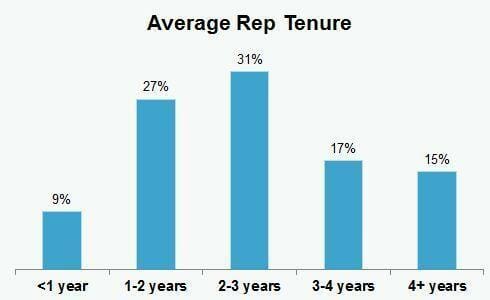
Combine all that with the fact that the average cost of replacing a sales rep is $115,000, and the thought of losing reps becomes a little scary (not to mention, leaving a large hole in your company’s pocket.)
But there is a way you can lessen the financial blow to your company. By improving your sales onboarding processes, you can improve your sales rep retention stats and speed up their ramp time.
Let’s take a deeper dive into sales onboarding, and look at the eight steps your company can use to accelerate your onboarding process. What is Sales Onboarding?
Before we can talk about improving the onboarding process, we need to understand exactly what we’re talking about.
Sales onboarding is the process companies go through to welcome new sales reps into their organization and train them on new skills, company knowledge and behaviors.
Unfortunately, a lot of companies are failing miserably with their sales onboarding processes. A 2018 Sales Management Association study found 62% of companies believe they are ineffective at onboarding new sales reps.
It’s important to dissect this stat and look at how effective onboarding can impact a business.
3 reasons you need to nail your onboarding process
1. Better retention rates
Employees are 60% more likely to remain with an organization for three years or longer when a standardized onboarding process is used. Get your onboarding processes wrong, and it’ll cost you big time in rehiring and retraining sales reps.
But why is onboarding so essential for retaining reps?
Well, it’s their first taste of the company, and they want to know that the job they’re about to commit to is worth it. If you can’t get your onboarding processes right, it’ll be harder for reps to find their place in the sales team, and it’s unlikely to fill them with confidence about the company.
2. Less ramp time
The longer it takes to get your reps up to selling speed, the more money you’re investing into an employee that’s not making any sales.
A lot of companies are stuck in an old-school approach when it comes to onboarding sales hires. They make their new sales reps attend lengthy meetings and shadow other reps for weeks (or months) at a time without letting them make so much as a sales call.
With a solid onboarding process in place, your reps will be able to start generating sales sooner, which will cut their training costs at the same time.
3. Greater sales results
The most significant benefit of having a watertight sales onboarding process lies in the sales results.
One Sales Enablement Optimization Study found companies that used onboarding for the training services and taught their new reps best practices were able to boost their win rates by 14%. By streamlining your training at the onboarding stage, you can not only get reps selling more, but you can get them selling faster.
8 Best Practices for Effectively Onboarding New Sales Reps
Now you know why you need an effective onboarding process, let’s look at how to implement it in your own company.
#1: Outline core competencies
First things first – make a list of everything you need from the rep to perform at the top of their game.
There isn’t a set list of competencies you should outline as this step will depend on the goals of your sales team. Some companies will value negotiation and selling techniques, while sales teams with outside reps might include things like in-person conversational and closing skills.
Whatever you decide your company’s core competencies are, make sure they’re made up of suggestions from senior sales managers and reps. After all, they’re the ones on the ground selling, so they’ll know better than anyone what skills are needed to make new hires as productive as possible.
#2: Map out a standard process
Next, standardize your processes.
Even if you plan your ramp time for new hires to be short, without a process, it’s unlikely the whole thing will go smoothly. Mapping out and standardizing your processes will mean your new hires will know what’s in store for them in their first weeks and months at your company.
A standardized process will bring your new rep up to speed on aspects of your company like:
- Company culture
- Detailed sales processes and cycles
- Products and offerings
- Buyer personas
- The company’s history
- Team structures
- Sales playbooks
- Standard project lengths
Gong recommends giving new hires access to an entire activity map of a sales cycle, so they’re able to see how a deal is closed, end-to-end:

Using a CRM can help at this stage, especially if you’re hiring at scale. As you’re likely to have a ton of documents outlining your processes, personas, and product offerings, using a CRM like SPOTIO can help keep everything organized and on track.
For example, in the SPOTIO dashboard, you can create a pipeline to store all of your onboarding paperwork and guide new hires through their onboarding without a ton of manual effort from sales managers.
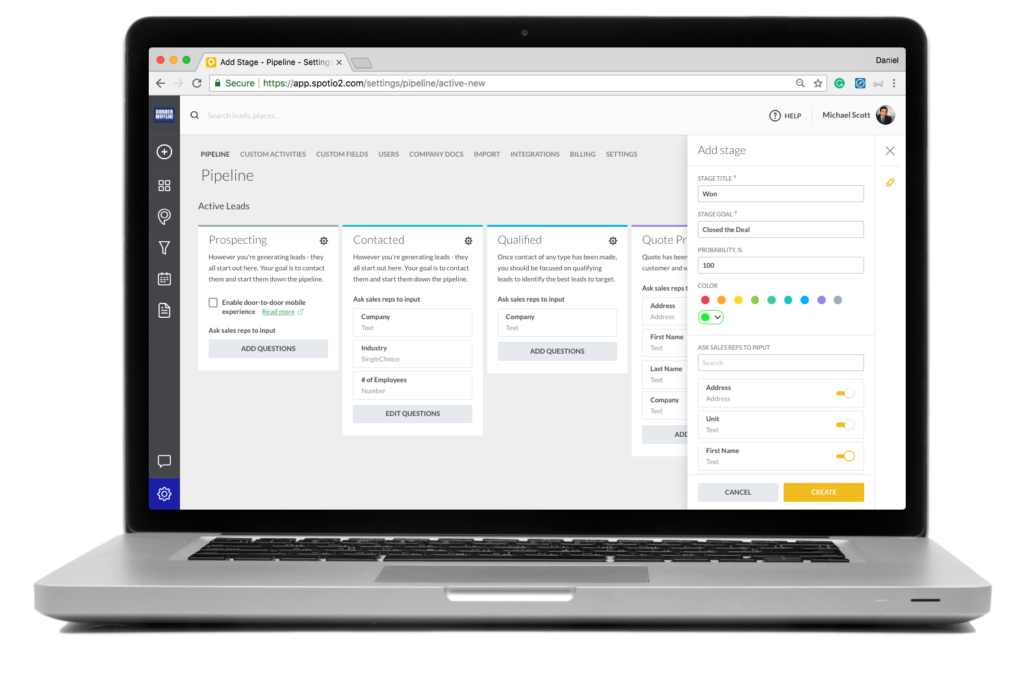 And even if your senior sales managers are out on the field, they can check in with new hires with the team chat feature to make sure they’re staying on track.
And even if your senior sales managers are out on the field, they can check in with new hires with the team chat feature to make sure they’re staying on track.
#3: Document everything
We’re talking about documenting your onboarding processes, as well as keeping track of how well reps are doing in their training.
Likely, your sales reps won’t be able to retain every single piece of information you throw at them during the onboarding phase. A study by Sales Performance International found about 50% of the content in sales training is forgotten within five weeks, and less than 10% of it will be remembered in a year.
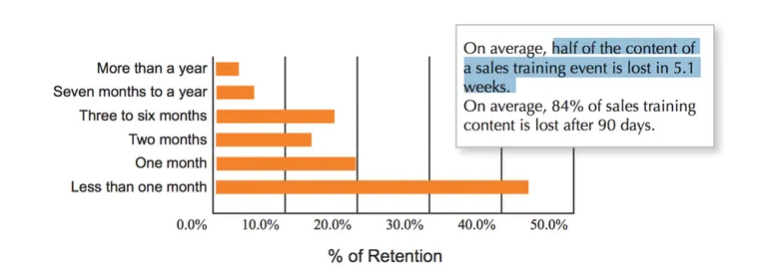
So documenting everything, and making processes available to your new hires so they can revert back to, is crucial to successful onboarding.
It always helps to have some resources and reference guides that they can use to refresh their memory on the fly. You can also include helpful tips and tricks like phone scripts and templates so the rep can familiarize themselves with what your typical sales process looks like.
If you’re using a CRM for your sales onboarding, you can tie-in feedback to each process so your new hire can take a look at what they did well, and what they need to improve on. Giving your new hires feedback is crucial—more than 60% of sales reps leave their jobs if their managers are poor coaches. So help them be the best they can be from the moment they start at your company.
#4: Use pre-boarding
Pre-boarding can be a controversial topic. You’re essentially making content available to your new reps before they’ve started at your company.
But hear us out.
Making onboarding materials available to your new sales reps is a great opportunity for them to familiarize themselves with the company, and what their new role is going to be all about. Sales reps might take it upon themselves to look through the documents and immerse themselves in the companies practices, particularly if it means it will get them selling faster.
Pre-boarding can also help your new hires to find their way around your sales software, which will help to speed up their ramp time. After all, the quicker they’re able to start selling, the faster they’re able to start earning commission.
#5: Instill focus with a 30-60-90 day plan
Starting any new job is tough, but you can help to ease the pain by giving your sales reps a clear plan of what their first three months with the company is going to look like.
Assigning new reps with a 30-60-90 day sales plan helps sales managers determine their approach to learning the business, ability to create and track measurable goals, and willingness to hold themselves accountable.
Sales Enablement Manager Brian Goth recommends creating a detailed plan that’s broken down into processes, products, tools, and industry.
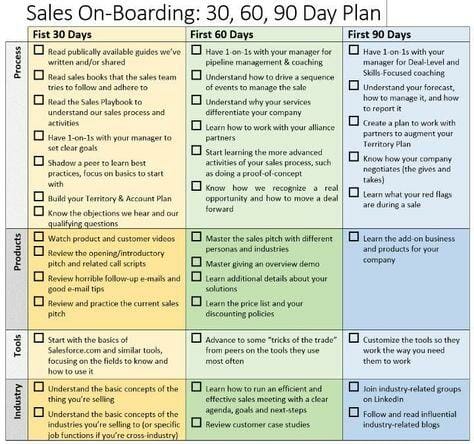
The ultimate goal of having such a detailed plan in place? To get sales reps selling quicker and bringing money into the company faster. In a example from Gong, reps can add up to $60k in extra revenue if you can get them selling in their second month instead of their fourth.
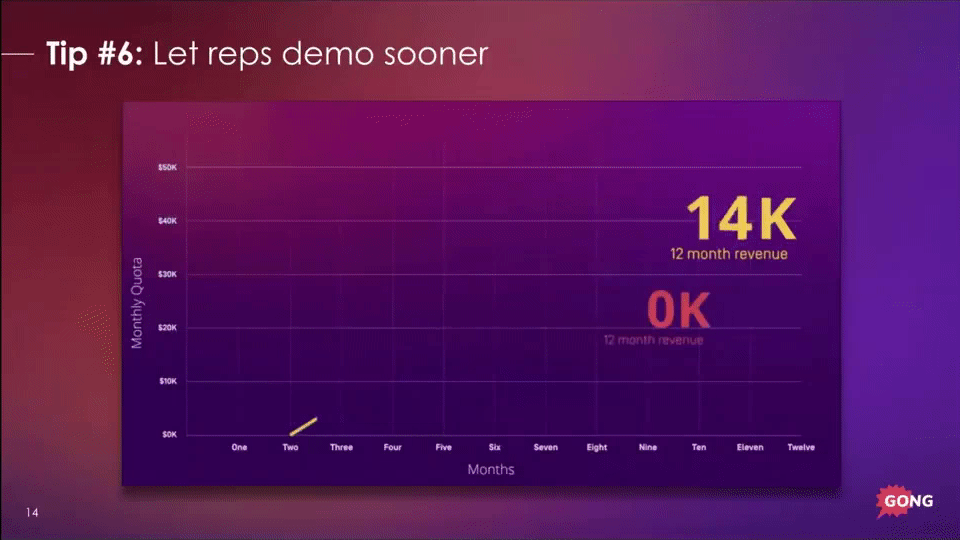
Pro-tip: Make sure you don’t just “set and forget” your 30-60-90 day plan. As a rule of thumb, have a senior sales manager review it every 3-6 months to pinpoint what worked, and what needs to improve to make the next onboard even more successful.
#6: Provide ongoing training
As Ryan Robinson points out on Close.io, the learning never stops when it comes to sales training techniques.
And giving your reps ongoing training pays off. After all, high-performing sales organizations are twice as likely to provide ongoing training than their low-performing counterparts. As we highlighted in a recent blog post, a trustworthy rep closes more sales, and they have a certain set of traits:
- They ask the right questions and get to the heart of a prospect’s problem
- They provide insight that allows prospects to understand their problem fully
- They leave their prospects feeling clear about what to do and what to focus on
- They use terms like “certainly” and “absolutely” to inspire confidence
Without ongoing training, it’s hard for new reps to achieve these key traits.
Make sure you’re giving your sales reps proper, personalized training when they’re first hired. This means making sure they know how your company’s products work, how they can solve a prospect’s problem, and they understand the sales process your team follows.
You can even go one step further and track how much training a rep is receiving and how knowledgeable they are about the offering, and set up reminders for your sales managers to make sure they’re nurturing new reps.
Pro-tip: Once your new reps are getting settled, you can build a sales leaderboard in SPOTIO to encourage some healthy competition and drive the business forward.
#7: Show reps how “top-performers” do it
There’s a reason that new sales reps shadow top-performers—it’s one of the best ways for them to learn how processes work, and what’s expected of them.
Pairing your new hires up with top-performing sales reps is one of the best ways to cut their ramp time, and show them the company’s standards on interacting with customers and closing deals.
Having new hires shadow your company’s top performers can also:
Light a competitive spark: By nature, sales reps are competitive (I mean, we’ve even built a leaderboard for it!). Having your new reps see how the best people in the company perform can engage them in the sales process and ignite their competitive streak to want to be a top-performer themselves
Help them see their future prospects: Room to grow in a company is important. If a new hire is able to see professional growth opportunities within your top-performers, this can help boost their interest in their role
Promote teamwork: The best teams work together. Pairing up your top-performers with new reps can create a “mentor” bond that will open up the opportunity to work together down the line, and share sales tips and tricks once the new rep settles in
Be warned: not all top-performers have time to nurture new sales reps, so it’s important to spread the responsibility around. Don’t have your top-performers constantly being shadowed by new hires.
Instead, try pairing up reps with top-performers on a rotational basis, and only assign top-performers who you think will be a good match, personality-wise, to the new hire.
Once you’ve assigned a top-performer, get them involved in the new hire’s onboarding process as soon as possible. This will ease the responsibility on the team’s sales manager to keep their onboarding process on track.
Plus, it will give the rep mentoring them a sense of ownership in their onboarding as well.
#8: Track rep performance
Finally, make sure you track your new rep’s performance using KPIs.
Even if they’re settling in well and they’re completed the onboarding process, it’s important to track ramp metrics like:
- How long it took to fulfill their quota
- How many leads in their funnel/demos booked
- How many deals they closed
- How long it took to close their first deal
Tracking your rep’s performance is essential for a bunch of different reasons. Firstly, it can give you an overall picture of their selling abilities in their early stages. But it can also help you to see how effective your onboarding process was, and what you should be doing to improve it.
To get a larger picture, track whether the rep is hitting their KPIs at the right time and if their training mentor believes they are competent. For outside sales reps, it’s also essential to take a look at how they’re planning territories, and if they’re sticking to their sales routes. ![]()
Using SPOTIO, sales managers can build custom reports for each new hire in real-time to get a clear picture of their conversions and benchmarks.
Tracking a rep’s performance using solid data can give you a better idea of how many sales they’re bringing in, and if they’re earning their spot on your sales team.
Start refining your sales onboarding process
Bringing new sales reps into your team without a process is hard.
Without a process, it’s unlikely you’ll be able to train and nurture a rep in an efficient way. Not to mention it’ll look sloppy on your part, and during the onboarding phase, new hires are also sizing up your company to make sure it’s a good fit for their career goals.
The cost of replacing a sales rep averages at $115,000 and new hires are 60% more likely to stick around if a business has a standardized onboarding process in place. Refining and perfecting your sales process makes sense—for your employee retention rates and your bottom line.
______
SPOTIO is the #1 field sales acceleration platform designed specifically for outside sales managers and reps to squeeze every drop out of their field sales efforts.

